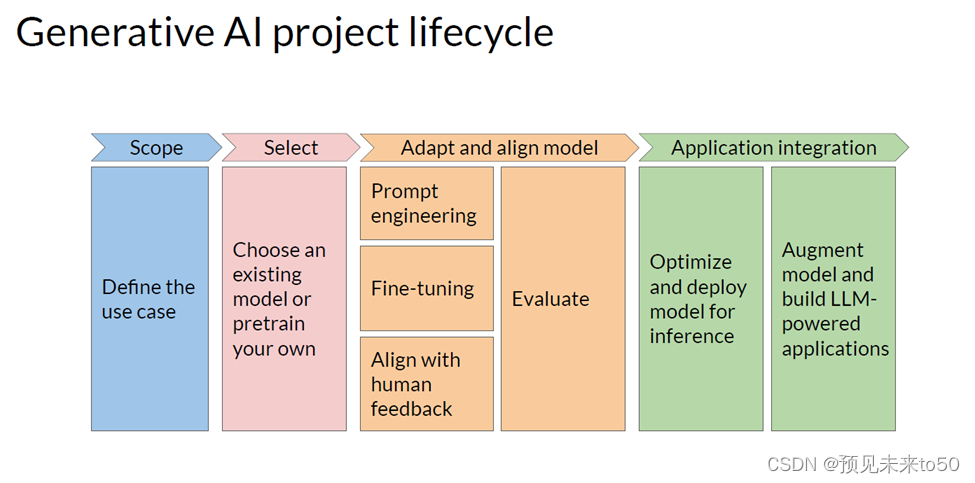Generative AI project lifecycle(生成式AI项目生命周期)
Throughout the rest of this course, you're going to learn the techniques required to develop and deploy an LLM powered application. In this video, you'll walk through a generative AI project life cycle that can help guide you through this work. This framework maps out the tasks required to take your project from conception to launch. By the end of this course, you should have some good intuition about the important decisions that you'll have to make, the potential difficulties you'll encounter, and the infrastructure that you'll need to develop and deploy your application. Here is a diagram of the overall life cycle. We're going to talk through it stage by stage.

The most important step in any project is to define the scope as accurately and narrowly as you can. As you've seen in this course so far, LLMs are capable of carrying out many tasks, but their abilities depend strongly on the size and architecture of the model. You should think about what function the LLM will have in your specific application. Do you need the model to be able to carry out many different tasks, including long-form text generation or with a high degree of capability, or is the task much more specific like named entity recognition so that your model only needs to be good at one thing. As you'll see in the rest of the course, getting really specific about what you need your model to do can save you time and perhaps more importantly, compute cost.
Once you're happy, and you've scoped your model requirements enough to begin development. Your first decision will be whether to train your own model from scratch or work with an existing base model. In general, you'll start with an existing model, although there are some cases where you may find it necessary to train a model from scratch. You'll learn more about the considerations behind this decision later this week, as well as some rules of thumb to help you estimate the feasibility of training your own model. With your model in hand, the next step is to assess its performance and carry out additional training if needed for your application. As you saw earlier this week, prompt engineering can sometimes be enough to get your model to perform well, so you'll likely start by trying in-context learning, using examples suit





 最低0.47元/天 解锁文章
最低0.47元/天 解锁文章

















 被折叠的 条评论
为什么被折叠?
被折叠的 条评论
为什么被折叠?








